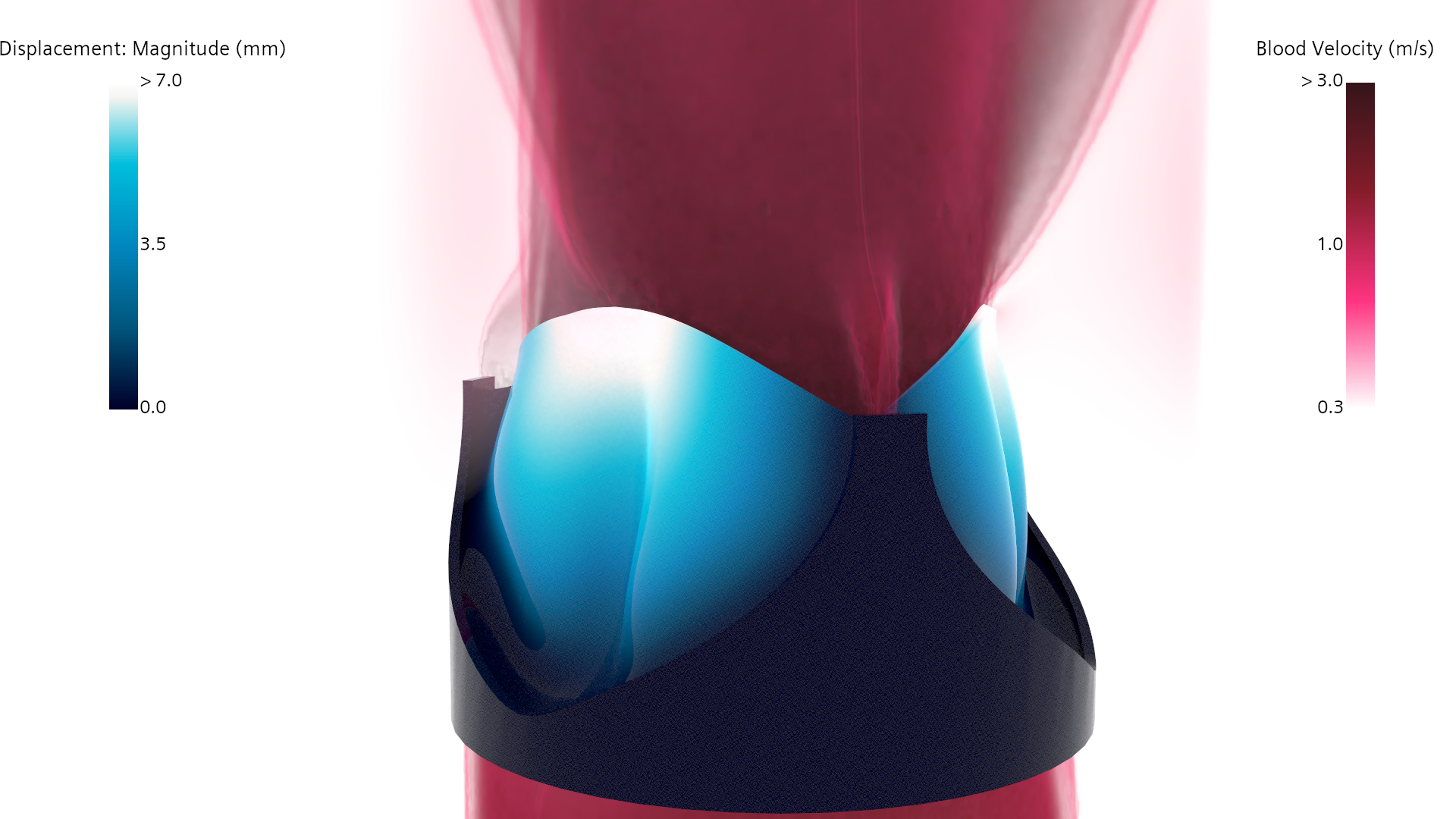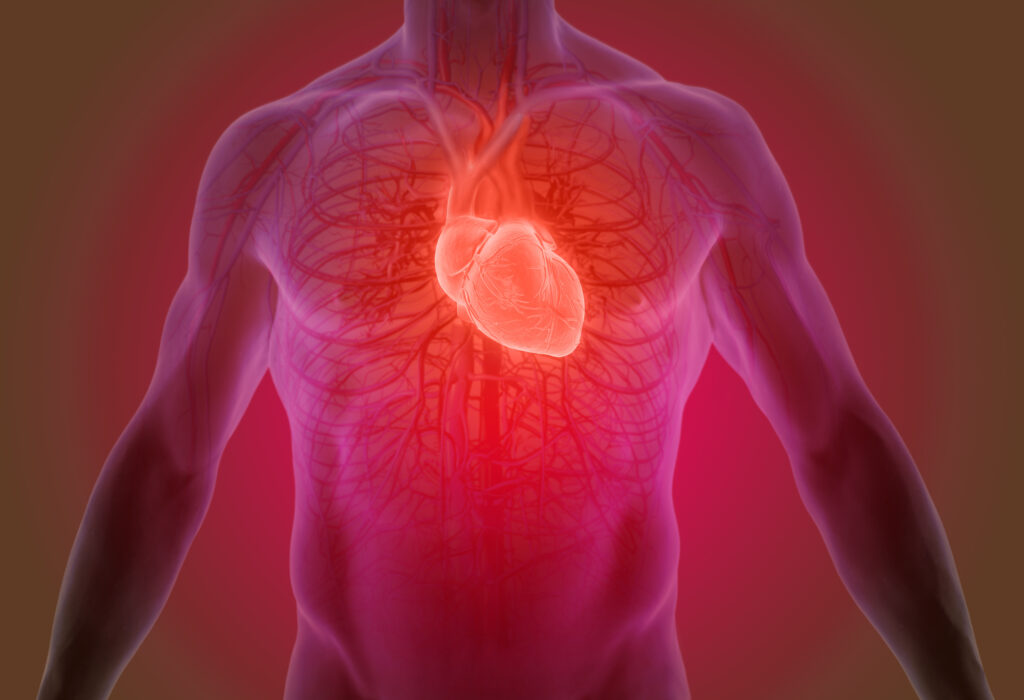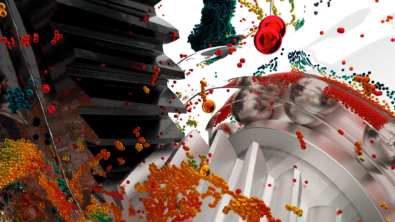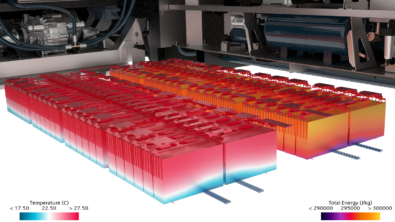FSI will never break your heart – ignoring it could

Ignoring the profound impact of strong two-way coupling in the Fluid-Structure Interaction (FSI) between prosthetic heart valves and blood during the design process will result in suboptimal valve designs and could, ultimately, lead to heart failure.
Fortunately, Simcenter STAR-CCM+ 2402 gives you all the tools you need to design for maximum longevity and safety of any type of valve.
35 million beats per year
Your heart tirelessly beats approximately 100,000 times a day, totaling a staggering 35 million beats in a year. With each beat, your heart valves diligently open and close, facilitating the vital task of pumping blood through your arteries. Serving as one-way inlets or outlets from the heart muscle to the ventricle, these valves prevent the backward flow of blood. But what if one day there is a flaw in that clockwork?

February 2024 is National Heart Month, a time where everyone is encouraged to focus on their cardiovascular health. But unfortunately, sometimes even irrespective of how much one takes care, reality for some is that their heart may at one day simply not be functioning anymore as it should: the aortic valve has two basic failure modes called Stenosis and Insufficiency. Stenosis describes the narrowing of the valve orifice due to reduced leaflet excursion and opening of the valve, restricting the flow of blood in flow direction.
Insufficiency describes the inability of the valve to close quickly enough, creating leakage of blood against the flow direction. Both failure modes will largely increase the workload on the heart and ultimately lead to heart failure.
The trileaflet heart valve
And so, unfortunately, some people face issues with their natural valves, leading to the necessity of replacing them with prosthetics. Considering the heart’s extraordinary workload of over 35 million cycles annually, the careful and precise design of these prosthetic trileaflet heart valves is not just important but critical.
That is why today, I will demonstrate how Fluid-Structure-Interaction (FSI) simulations can aid engineers in the design of safer, longer-lasting prosthetic heart valves (PHV) and guide you through the effects that a Multiphysics approach will have on enhancing the precision and reliability of heart valve simulations and compare it to a single physics approach.
To model strong two-way coupled Fluid-Structure Interaction (FSI) applications, where a dense fluid interacts with a flexible structure and vice versa, is one of the most intricate challenges in the realm of multiphysics. To predict the dynamic interaction between fluid and structure, engineers need dedicated sophisticated simulation capabilities.
And while modeling the FSI in a heart valve is a highly complex engineering challenge it has the potential to transform the everyday of many, for the better.
Why FSI?
In a previous blog post, my colleague Rafael demonstrated the simulation of the intricate opening and closing dynamics of a PHV in Simcenter STAR-CCM+. Despite the highly nonlinear nature of this behavior, where the thin leaflet membrane experiences a snap-through instability transitioning between the opened and closed positions with virtually zero stiffness, he successfully captured these movements.
In his set-up, the opening and closing of the valve was driven by a pressure boundary condition on the leaflet surface, mimicking the blood pressure. The time-dependent pressure curve was derived from experimental data on the differential pressure between the inlet and outlet of the valve.
While this is a remarkable dynamic simulation, it is not really new and could have been done with other simulation tools as well. And, more importantly, a significant effect was ignored here – the valve leaflets don’t operate in isolation; every minuscule movement of a leaflet affects the surrounding blood, creating fluctuations in pressure, modifying flow patterns, or even inducing turbulence. Simultaneously, the fluid’s motion and the pressure exerted on the leaflet surface induce or dampen deformations and accelerations of the leaflet.
Because of the blood’s high density, the ratio between the mass of the leaflet and fluid mass displaced by the leaflet is nearly one. Together with the very low stiffness of the leaflet, this indicates a strong two-way coupling between fluid and solid.
Disregarding these strong Fluid-Structure Interactions will lead to inaccurate predictions of the valve dynamics. The video below provides a visual comparison of the leaflet dynamics with and without considering FSI effects, e.g. the dampening effect of the blood on the leaflet and the acceleration of blood through the leaflet displacement.
As you can see, disregarding the two-way FSI leads to an overprediction of the opening and closing speed of the valve, which in return may lead to a leaflet design that does not open and close quickly enough when interacting with the surrounding blood. As mentioned earlier, this will cause Stenosis and Insufficiency and increase the workload on the heart with heart failure as a potential outcome. The next animation shows the difference in the shape and size of the orifice during valve opening between a simulation without FSI and with FSI effects included. It is evident that the coupling between blood and leaflet structure has not only an effect on the speed at which the valve opens but also on the shape of the orifice once the valve is opened.
This shows that only a correct simulation of all the two-way coupled FSI effects will allow to design an optimal leaflet shape and thickness with maximum efficiency and longevity and therefore safety for the patient.
The challenge of modeling strong two-way coupling in FSI
Modeling strong two-way coupled Fluid-Structure Interaction (FSI) presents inherent challenges owing to the distinct physics and dynamics of fluids and solids, each governed by different equations and continuum discretization methods. In the context of a prosthetic heart valve (PHV), where the fluid adheres to Incompressible Navier-Stokes equations and the solid follows a hyper-elastic material law, coupling these equations becomes a complex endeavor, particularly at the fluid-structure interface.
Two fundamental physical conditions must be satisfied at this interface. The kinematic condition dictates identical velocities for fluid and solid, essentially preventing the fluid from detaching from the solid or penetrating it and ensuring their cohesive motion. The dynamic condition balances pressures and forces at the fluid and solid sides of the interface and dictates a force equilibrium.
In the case of a strong two-way coupled FSI application like the prosthetic trileaflet valve, the thin leaflets displace a substantial mass of blood and encounter large variations in pressure, leading to extensive deformations and accelerations, making it inherently challenging to satisfy the two physical conditions.
Tackle the toughest FSI problems with Simcenter STAR-CCM+ 2402
Simcenter STAR-CCM+ 2402 addresses these challenges by introducing the new FSI Dynamic Stabilization Method and the 2nd Order Backward Differentiation integration scheme for solids. These enhancements significantly improve convergence and stability in simulations of such complex systems and ensure full kinematic consistency across the FSI interface for first and second-order time integration.
In addition, satisfying geometric conservation is crucial, requiring the fluid and solid meshes to move synchronously at the interfaces. Simcenter STAR-CCM+ excels in this aspect through effective use of mesh morphing, overset meshes, and dynamic re-meshing, ensuring harmonized movement of meshes even in this case, where the large leaflet deformations lead to dramatic changes of the fluid domain.
More accurate, stable, and reliable modeling of strong two-way coupled FSI
In essence, these advancements in Simcenter STAR-CCM+ pave the way for more accurate, stable, and reliable modeling of strong two-way coupled FSI, particularly in intricate applications like prosthetic heart valves. There aren’t many instances where CFD can literally be called life-changing. This time I feel it is fair to say so.
And yet, February 2024 is National Heart Month, so take good care of yours! And while you are at it, take good care of those of your beloved ones, too.
Disclaimer
No hearts were broken during the making of this post.


